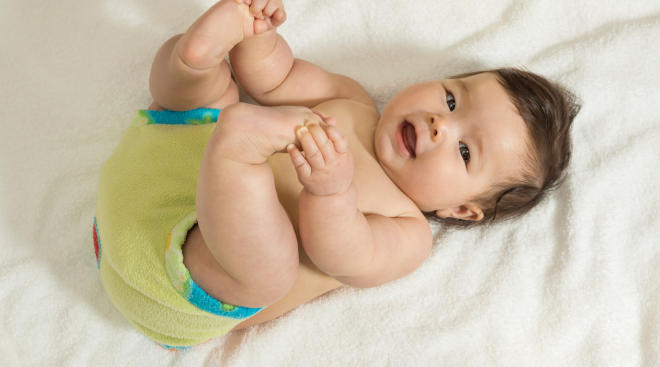As the sun peeks through the curtains, casting a warm glow across the nursery, the quiet moments are often punctuated by the delightful sight of a tiny being stretching their limbs, arching their back, and yawning with abandon. This innocent display of flexibility, so common in infants, may leave many parents wondering: what prompts this endearing behavior? Stretching, it turns out, is more than just a cute quirk; it’s a fascinating aspect of baby behavior that reflects their development, comfort, and instincts.
In this article, we delve into the reasons behind those adorable stretches, exploring the physiological, psychological, and evolutionary threads that weave together to form a tapestry of understanding about why our little ones seem to stretch so much. Join us on this journey to uncover the science behind baby stretching and what it reveals about their growth and well-being.
Understanding the Natural Reflexes Behind Baby Stretching
When observing infants, one behavior that stands out is their tendency to stretch frequently. This instinctive action serves multiple purposes, primarily benefiting their physical development and overall well-being. Stretching helps to increase blood circulation, which is essential as their bodies grow and adapt. Additionally, when babies flex and extend their limbs, it allows them to engage their muscles and joints, promoting flexibility and strength. This natural reflex also aids in preventing stiffness, ensuring that their tiny bodies remain agile and ready to explore the world.
Moreover, stretching in infants can be interpreted as a form of communication. When a baby stretches, they might be signaling their need for attention, comfort, or a change in position. It’s intriguing to note that these stretches often mirror those seen in other species, reflecting an innate biological rhythm. The act of reaching out or arching backward can indicate a desire to engage with caregivers or a readiness to play. Understanding this behavior not only enhances our awareness of infant needs but also helps us foster a nurturing environment that encourages their natural instincts.
The Role of Stretching in Infant Development and Growth
Stretching plays a pivotal role in an infant’s development, serving not only as a delightful display of their newfound agility but also as a crucial mechanism for their physical growth. When babies stretch, they engage multiple muscle groups, enhancing their flexibility and promoting better coordination. This involuntary reflex helps in developing motor skills by allowing infants to:
-
- Increase blood circulation within their muscular system.
-
- Improve joint mobility, which is essential for crawling and eventually walking.
-
- Support sensory exploration, as they learn to navigate their environment through reaching and grasping.
Additionally, stretching aids in the cognitive aspect of growth, stimulating neural connections that are crucial during these formative months. When infants stretch, they experience a sense of body awareness, fostering a connection between their mind and body. It is not merely about the physical but encompasses a range of developmental milestones, allowing them to:
-
- Enhance spatial awareness, vital for later gross motor skills.
-
- Encourage curiosity about their surroundings as they explore different positions and postures.
-
- Develop emotional well-being, as stretching can soothe and calm them.
Recognizing Different Types of Stretching in Babies
When observing infants, it’s fascinating to see how often they stretch their tiny limbs and body. Stretching in babies serves multiple purposes, providing essential signals about their physical development and general well-being. One major type of stretching is the **full-body stretch**, during which babies extend their arms and legs wide, often arching their backs. This not only helps to relieve any tension in their muscles but also aids in developing their coordination as they learn to control their movements over time. Visual indicators of a full-body stretch might include:
-
- Arched back
-
- Extended limbs
-
- Facial expressions of bliss or relaxation
Another type is the **side stretch**, where babies lean to their sides, showing a desire to reach or grab nearby objects. This movement is crucial as it strengthens their core muscles and improves balance. Additionally, there’s the **neck stretch**, often seen when babies tilt their heads back to get a better view of their environment. Each stretch serves as a form of exercise, fostering growth and muscular stimulation. A simple overview of these stretching types can be summarized as follows:
| Type of Stretch | Purpose |
|---|---|
| Full-body Stretch | Enhances coordination and relieves muscle tension |
| Side Stretch | Strengthens core and improves balance |
| Neck Stretch | Boosts neck strength and visual engagement |
Tips for Encouraging Healthy Movement Patterns in Your Baby
Encouraging your baby to develop healthy movement patterns not only supports their physical growth but also fosters cognitive development. To promote this, consider integrating playful activities that naturally stimulate movement. You can create a safe space for your baby to explore, allowing them to roll, crawl, and reach for toys. Utilizing colorful play mats with varying textures can captivate their attention and encourage stretching and reaching, which are essential for muscle development. Here are some effective activities you can try:
-
- Tummy Time: Start with a few minutes each day to strengthen neck and shoulder muscles.
-
- Interactive Play: Use toys that require reaching or rolling to boost mobility.
-
- Encourage Rolling: Place toys just out of reach to motivate your baby to roll over.
As your baby grows, integrating movement into daily routines helps them develop coordination and balance. You can introduce gentle exercises as part of your playtime. For example, guiding their legs into a bicycle motion can enhance flexibility and rhythm. It’s also important to monitor their cues, as overexertion can be counterproductive. A simple routine to follow includes:
| Time of Day | Activity | Duration |
|---|---|---|
| Morning | Tummy Time | 5-10 mins |
| Afternoon | Crawling Play | 10-15 mins |
| Evening | Gentle Stretching | 5 mins |
Q&A
Q: Why do babies stretch so much?
A: Babies stretch for a variety of reasons, most of which are completely natural. Stretching can help them shake off the stiffness from being curled up in the womb, improve circulation, and enhance muscle development. Just like adults might stretch after sitting for a long time, babies do it as part of their own physical development.
Q: Is stretching a sign of discomfort?
A: While stretching is usually a sign of comfort and relaxation, it can occasionally indicate discomfort. Babies often stretch to relieve tension in their muscles or when they are transitioning from sleep to wakefulness. However, if a baby seems excessively fidgety or irritable while stretching, it’s always wise to check in with a healthcare professional.
Q: Are there different types of stretches babies do?
A: Absolutely! You’ll notice various types of stretches in babies, from wide arm stretches to deep back arches. Some classic moves include the ‘Superman’ stretch, where they reach their arms and legs out, or the ‘Cat Stretch,’ where they bend their back. Each stretch serves a purpose and reflects their developing motor skills.
Q: When do babies start stretching?
A: Stretching begins early—just after birth, you may notice a newborn instinctively stretching their arms and legs. As they grow, this behavior becomes more prominent and varies in frequency and intensity. It’s all part of their growth and exploration of their body.
Q: How can parents encourage safe stretching for their babies?
A: Parents can encourage stretching by allowing their babies ample floor time on soft surfaces and providing toys just out of reach. Gentle massage or movement during tummy time can also promote flexibility and comfort. Always remember to follow your baby’s lead and let them stretch at their own pace.
Q: Can stretching benefit babies in the long run?
A: Yes! Regular stretching contributes to overall physical development by enhancing flexibility, promoting better coordination, and aiding in muscle growth. It also encourages motor skill development, which is crucial as they start crawling and walking.
Q: Should parents be concerned if their baby doesn’t stretch much?
A: Not necessarily. Each baby is unique, and some may naturally stretch less than others. However, if you notice a noticeable lack of movement or your baby seems unusually stiff, it’s best to consult with a pediatrician to rule out any concerns.
Q: Is there a difference between stretching during sleep and waking hours?
A: Definitely! Babies often stretch during their sleep cycles as a natural part of transitioning between sleep stages. This helps them relax and settle more comfortably. When they stretch while awake, it’s usually linked to exploring their surroundings or simply expressing their feelings of comfort and contentment.
Q: What’s the takeaway about baby stretching?
A: Stretching is an essential and delightful aspect of baby behavior, providing insight into their growing bodies and helping them explore their environment. Parents should embrace it as a normal part of development, celebrating every little stretch along the way!
In Retrospect
the act of stretching is as much a part of the baby experience as coos and giggles. These delightful displays of flexibility are not merely charming quirks; they are crucial aspects of growth and development. As babies stretch, they are learning to navigate their expanding world, building strength, and enhancing their motor skills. So, the next time you witness a little one arching their back or flinging their arms wide, take a moment to appreciate the wonder behind the movement. It’s a reminder of their remarkable journey from helplessness to independence, one stretch at a time. As parents and caregivers, understanding this behavior can deepen our connection to these tiny beings and enrich our appreciation for their natural progression. After all, in the beautiful dance of development, even the simplest gestures tell an extraordinary story.


